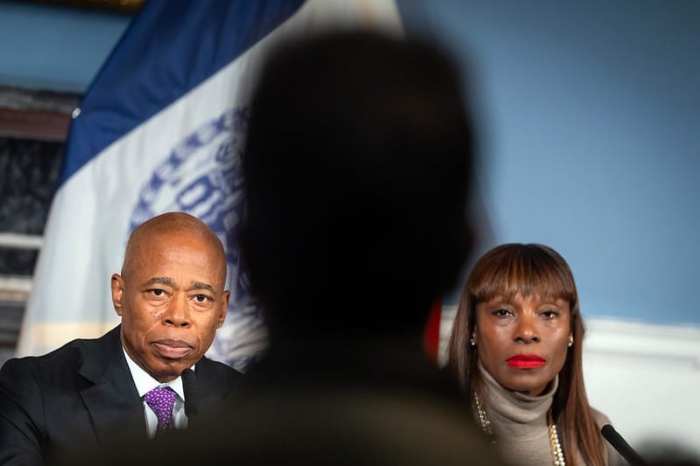
BY YANNIC RACK | If you think Starbucks has already taken over every corner in New York City, think again — and think big.
In what might be the beginning of an international trend, the company announced that it is opening a 20,000-square-foot superstore, designed by famed architect Rafael Viñoly, in the Meatpacking District.
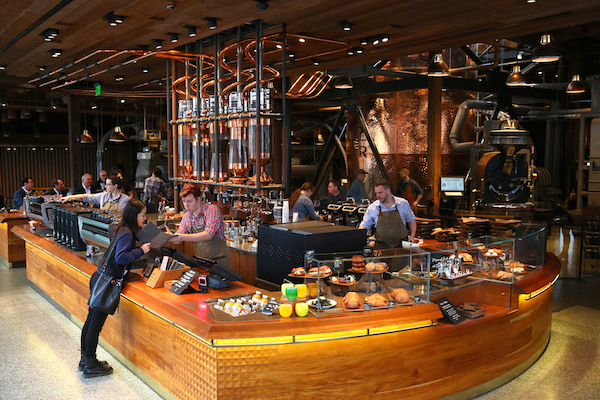
The Starbucks Reserve Roastery and Tasting Room, which will be the omnipresent coffee chain’s largest outlet in the world, is modeled on the concept store and interactive showroom of the same name that debuted in the company’s hometown of Seattle two years ago — and will stand in stark contrast to the more than 300 Starbucks cafes that already dot the city.
“Our Seattle Roastery experience created something that had never been done before, transforming a retail environment into something far beyond just a coffee shop, and into the single best retail experience of any kind,” said Starbucks Chairman and CEO Howard Schultz.
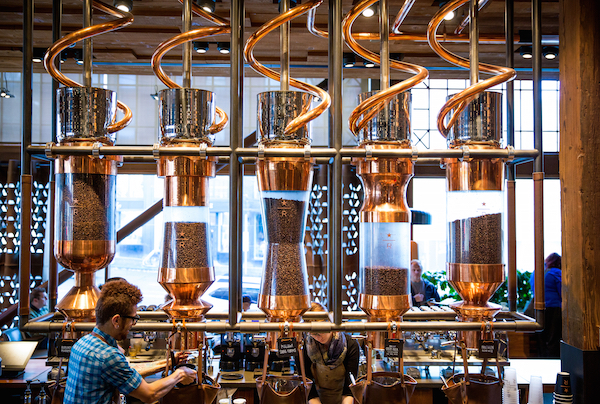
“In New York, we want to take elements from what we originally created and build something even bigger and bolder, celebrating coffee and craft in a completely unique and differentiated way. We want this experience to tell our customers that we’re coming to Broadway.”
The roastery, which teaches visitors about the entire crop-to-cup process of sourcing coffee and will also sell the brand’s small-batch specialty roasts, is set to open in 2018 inside a nine-story building that is currently being built at 61 Ninth Ave. (on the corner of W. 15th St.).
“A local sensation [in Seattle] since opening its doors, the Roastery is coffee as theater, encouraging customers to interact with Starbucks roasters and baristas in order to deepen their understanding of the art behind sourcing, roasting and brewing rare coffees,” the company said in a statement.
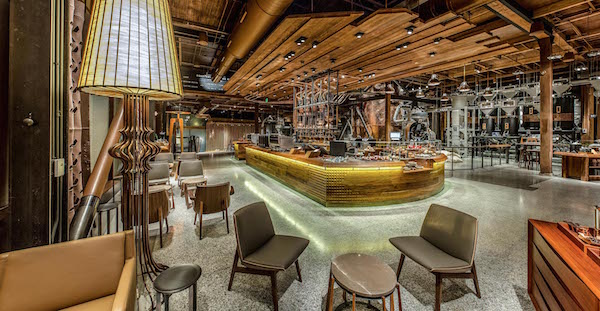
Starbucks had reportedly been eyeing another location in Asia — the site of its fastest-growing market — to open the second outpost of its high-end coffee temple.
After the announcement that the Roastery would come to New York City instead, The Seattle Times noted that a spokesperson in Asia the company confirmed a similar superstore there is still under consideration, as is a third US location.
The new tasting room concept was launched as a strategy to build the company’s brand in the higher end of the coffee market, and to remain relevant amid the rise of specialty coffee roasters like Stumptown, which operates two cafes in New York City.
Starbucks can likely rely on a steady flow of customers to the new coffee complex in the Meatpacking District, since the site is in close proximity to Chelsea Market, Google’s New York offices, and the High Line.
The building itself, a former lumberyard that was sold in 2015, is developed by Vornado Realty Trust and Aurora Capital Associates.
The latter company is also working on a range of other projects in the neighborhood, including the gigantic Restoration Hardware store coming to the corner of Ninth Ave. and W. 12th St., as well as a planned redevelopment of an entire block of historic Gansevoort St.
On top of the three-story retail base, the new building will house offices. Construction is scheduled to wrap up next year, according to Starbucks.
The coffee chain already made local headlines a few weeks ago because one of its stores on Seventh Ave. (btw. W. 23rd & W. 24th Sts.) got an unusual new next-door neighbor: Dunkin’ Donuts.
The sight of these bitter rivals in such close proximity seems to be a first for New York, despite the fact that the two retailers, combined, operate nearly 900 locations in the city. The impending side-by-side showdown didn’t come as a surprise to industry watchdogs.
“It was only a matter of time,” Jonathan Bowles, executive director of the Center for an Urban Future, a think tank that tracks the spread of chains in the city, told The Wall Street Journal.
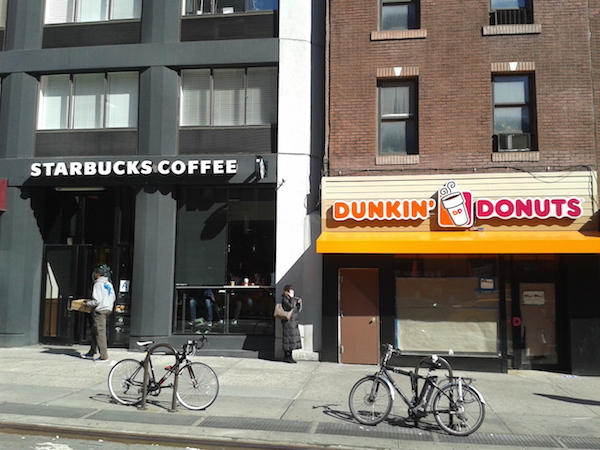
According to his organization, Dunkin’ Donuts is now the largest chain in the city based on number of locations. It has added more than 100 stores over the last five years, bringing its current figure to 568, while Starbucks has added more than 40 during the same period, bringing its total to 307.




